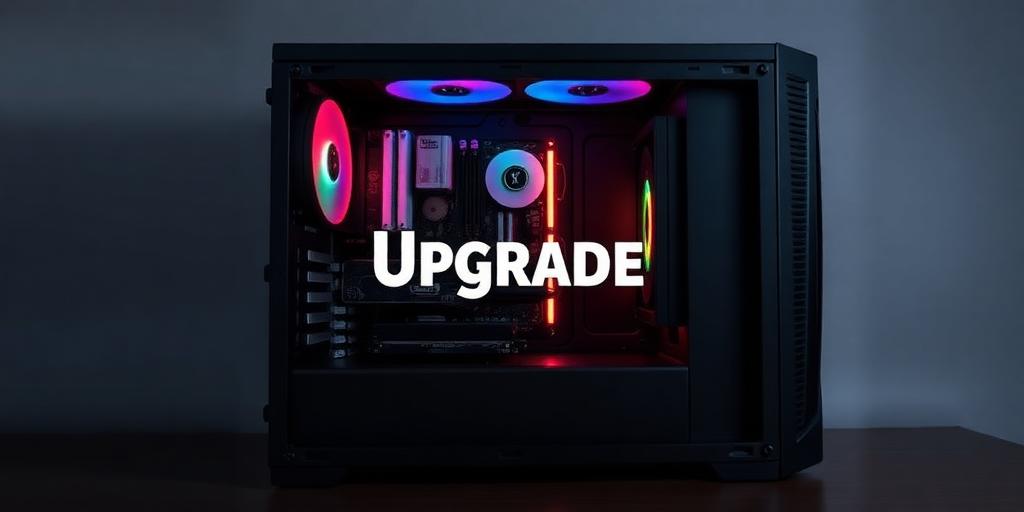Upgrading Your Old PC: A Step-by-Step Guide for 2024
Is your trusty PC feeling a little… sluggish? Don't resign it to the tech graveyard just yet! Upgrading specific components can breathe new life into your machine, offering a performance boost without the cost of a brand-new system. This guide provides a step-by-step approach to upgrading your old PC in 2024.
Step 1: Assess Your Current System
Before diving into upgrades, understand your PC's current state. This involves identifying bottlenecks and compatibility issues.
- Operating System: Ensure you're running a modern, supported OS (Windows 10/11). Older OS versions may limit hardware compatibility.
- CPU & Motherboard: Note the CPU model and motherboard socket type. This dictates compatible CPU upgrades. Use tools like CPU-Z to gather this information.
- RAM: Determine the amount and speed of your RAM. Check the motherboard's maximum RAM capacity and supported speeds.
- Storage: Identify your primary storage device (HDD or SSD) and its capacity. Consider upgrading to a larger, faster SSD for improved performance.
- GPU: If you're a gamer or use graphically intensive applications, the GPU is a key upgrade target.
- Power Supply (PSU): Check the wattage of your PSU. Upgrading power-hungry components like the GPU may require a PSU upgrade.
Step 2: Identify Upgrade Priorities
Based on your assessment, prioritize upgrades that will provide the most significant performance gains.
- SSD Upgrade: Replacing an HDD with an SSD is the single most impactful upgrade for overall system responsiveness.
- RAM Upgrade: Increasing RAM capacity, especially to 16GB or 32GB, improves multitasking and application performance.
- GPU Upgrade: For gaming and graphics-intensive tasks, a GPU upgrade offers the most noticeable improvement.
- CPU Upgrade: A CPU upgrade can provide a significant performance boost, but ensure compatibility with your motherboard.
Step 3: Research Compatible Components
Compatibility is crucial. Use online resources and manufacturer websites to verify compatibility between new components and your existing system.
- CPU Compatibility: Check the motherboard's CPU support list to ensure compatibility.
- RAM Compatibility: Verify that the RAM speed and type (DDR4, DDR5) are supported by your motherboard.
- GPU Compatibility: Ensure your PSU provides sufficient wattage for the new GPU. Also, consider the physical space available in your case.
Step 4: Gather Necessary Tools
Before you start, gather the following tools:
- Screwdrivers: Phillips-head screwdrivers of various sizes.
- Anti-Static Wrist Strap: Essential for preventing electrostatic discharge, which can damage components.
- Zip Ties or Velcro Straps: For cable management.
- Compressed Air: For cleaning dust from components.
- Thermal Paste: Required when replacing the CPU cooler.
Step 5: Perform the Upgrades
Follow these general steps for each upgrade:
- Power Down and Disconnect: Turn off the PC and unplug it from the power outlet.
- Open the Case: Remove the side panel of your PC case.
- Install the New Component: Follow the manufacturer's instructions for installing the new component. This may involve removing old components, installing drivers, and connecting cables.
- Cable Management: Use zip ties or Velcro straps to neatly route cables.
- Close the Case: Replace the side panel of your PC case.
Step 6: Install Drivers and Software
After installing the new hardware, install the latest drivers and software. This ensures optimal performance and stability.
- GPU Drivers: Download the latest drivers from the NVIDIA or AMD website.
- Motherboard Drivers: Install the latest chipset drivers from the motherboard manufacturer's website.
Long-Tail Keywords
- Upgrade old PC for gaming 2024
- Best PC upgrades for performance boost
- DIY PC upgrade guide 2024
- Affordable PC upgrade options
- Step-by-step PC upgrade tutorial
Conclusion
Upgrading your old PC is a cost-effective way to improve performance and extend its lifespan. By following these steps, you can breathe new life into your machine and enjoy a faster, more responsive computing experience. Remember to research compatibility and follow safety precautions to ensure a smooth upgrade process.









